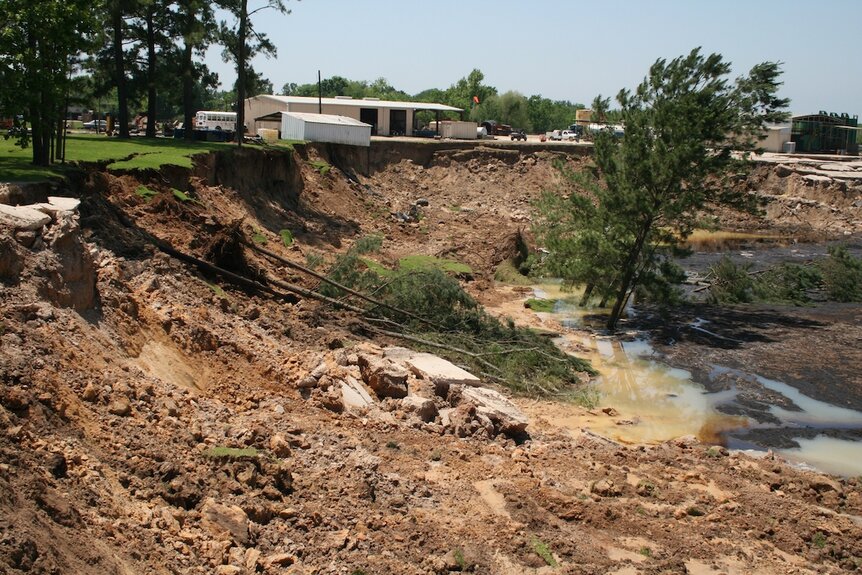Create a free profile to get unlimited access to exclusive videos, sweepstakes, and more!
A massive sinkhole in East Texas is growing even larger
Watch your step.

Residents of NBC’s La Brea (streaming now on Peacock!) have to live with the threat of the ground opening up and swallowing them whole. The series opens with a massive sinkhole suddenly appearing at the La Brea tar pits. Hundreds of people, cars, and buildings, fell along with the ground beneath their feet into the hole’s gaping maw. Rather than hitting the bottom and shattering against bedrock or boiling in a pool of liquid magma, they found themselves in a primeval world filled with ancient creatures and never ending danger.
While sinkholes are usually the stuff of nightmares (or primetime television), it is happening for real, and for the fourth time, in a small Texas town. Daisetta, Texas is near the eastern edge of the state and has a population of only 923, as of the 2020 census. That might make Daisetta a contender for the title of most sinkholes per capita.
RELATED: Swallowed by sinkholes: the science behind ‘La Brea’
The oldest known sinkhole in the area is from 1969. That sinkhole expanded 12 years later in 1981, and is now a lake. More recently, a sinkhole opened up near the Hull-Daisetta High School, just west of FM 770, near the boundary of the DeLoach Oil and Gas Waste Well, in 2008. It’s unclear what caused this most recent sinkhole, but it may be related to oil drilling and fracking, which introduces new stresses to an already fragile landscape.
Daisetta is particularly susceptible to the formation of sinkholes because the entire town sits on top of a natural salt dome. They form when layers of salt are buried beneath heavier types of rock. Because salt is comparatively buoyant, it floats to the surface over long enough time scales. The result is a balloon of salt, covered over with a relatively thin layer of top rock. If the salt is then dissolved, the overlying rock has nothing beneath to support it, and collapses.
When the sinkhole opened up in 2008, it started as a relatively small hole 20 feet across. Over the next couple of days, it further eroded until it was approximately 900 feet across and 260 feet deep. After that initial widening, the sinkhole has been quiet. It filled with water and alligators have taken up residence inside. Some locals visit the sinkhole to fish. Otherwise, it has become an accepted part of the local environment. Residents got used to it and were comfortable in the knowledge that whatever sinking it was going to do, it had already done.
They were wrong.
Recent measurements confirm that, for reasons unknown, the sinkhole is widening again. According to authorities, the hole has gained 150 feet both in diameter and in depth. Nearby storage tanks and structures at the edge of the hole are readying to fall inside.
Residents reported sounds like gunshots and got outside just in time to see buildings fall into the sinkhole. They also reported cracks forming in the ground, according to KTRK in Daisetta. Unfortunately, there’s little which can be done to prevent the continued expansion of the sinkhole, aside from discontinuing any activities (like fracking) which would further destabilize the salt dome.
At the time of this writing, authorities in Daisetta believe residents aren’t in any immediate danger. The sinkhole is only about 500 meters from the high school, but it’s on the other side of the road and expanding in the opposite direction. For the time being, no evacuation orders are in place. For now, authorities are monitoring the hole and preparing to change course if the need arises.
“Sinkholes are extremely unpredictable. It can take a week to move one foot, or it can crumble 20 feet overnight,” said Liberty County Assistant Fire Marshal Erskin Holcomb, speaking with ABC 13.
While we eagerly await La Brea Season 3, catch the first two seasons streaming now on Peacock!



























